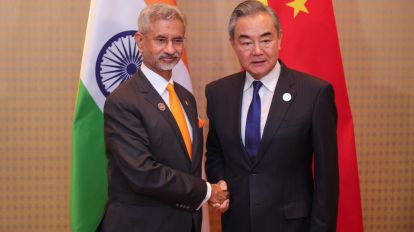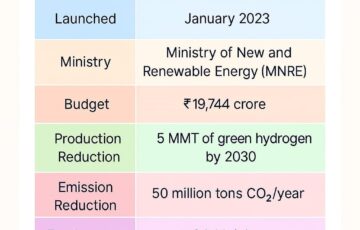India-China Diplomatic Talks Resumed at G-20 Summit
Syllabus:
GS-2:
India and its Neighbourhood ,Important International Institutions ,Groupings & Agreements Involving India and/or Affecting India’s Interests , International Treaties & Agreements , Effect of Policies & Politics of Countries on India’s Interests.
Focus:
The recent meeting between India’s External Affairs Minister S. Jaishankar and China’s Foreign Minister Wang Yi at the G-20 summit marks a significant step in the resumption of India-China diplomatic talks. Discussions on the next steps, including the resumption of direct flights and visa issuance, are vital for improving bilateral relations.
Introduction
- At the G-20 summit in Rio de Janeiro, External Affairs Minister S. Jaishankar and Chinese Foreign Minister Wang Yi held their first meeting since the disengagement of troops along the Line of Actual Control (LAC) in October.
- The meeting followed the discussions between Indian Prime Minister Narendra Modi and Chinese President Xi Jinping in Russia.
- Both sides agreed to take “next steps” in improving bilateral ties, including resuming direct flights, visa issuance, and other areas of cooperation.
Understanding G20 :
- Definition: The G20 is an international forum comprising the world’s leading industrialised and emerging economies, aiming for global economic stability and growth.
- Members: Includes 19 countries and the European Union (Canada, France, Germany, Italy, Japan, UK, US, Russia, Australia, Saudi Arabia, India, South Africa, Turkey, Argentina, Brazil, Mexico, China, Indonesia).
- Established: Formed in 1999 following the Asian financial crisis to discuss financial stability.
- Objectives: Policy coordination, promote financial regulations, and create a new international financial architecture.
- Presidency: Rotates among member countries; India held it from Dec 2022 to Nov 2023.
- Tracks: Includes Finance track (financial issues) and Sherpa track (non-financial issues).
- Engagement Groups: Non-government participants from member countries.
Key Discussions at the Meeting:
- LAC Disengagement Agreement: The ministers acknowledged that disengagement along the border had helped maintain peace and tranquillity, signalling positive momentum in bilateral relations.
- Upcoming Talks: It was decided that meetings between the Special Representatives (National Security Adviser Ajit Doval and Wang Yi) and the Foreign Secretary-Vice Minister mechanism would take place soon to discuss boundary issues further.
- Focus Areas: The discussions covered multiple aspects of India-China cooperation, including visa issuance, journalist permissions, river-data sharing, and facilitating Indian pilgrims to Kailash Mansarovar.
Role in Global Affairs
- Constructive Engagement: Jaishankar and Wang highlighted the productive cooperation between India and China in global forums such as BRICS, Shanghai Cooperation Organization (SCO), and G-20.
- International Relations: Both countries emphasised their significant roles on the international stage and expressed their commitment to strengthening ties in multilateral platforms.
Practical Steps for Bilateral Relations
- Resumption of Flights and Visa Facilitation: Wang Yi pointed out that direct flights between India and China, suspended during the COVID-19 pandemic, had not resumed due to tensions at the LAC. Both sides discussed working toward restoring them.
- Journalist and Visa Mutual Facilitation: Plans were also discussed for easing visa restrictions and facilitating journalist exchanges between the two countries.
- Commemoration of Diplomatic Ties: The two sides discussed commemorating the 75th anniversary of diplomatic relations in 2025, with a focus on increasing exchanges and visits in various fields to foster better understanding and trust.
Challenges in India-China Relations:
- Border Disputes: Despite recent disengagement, long-standing border issues between India and China remain unresolved and continue to cause tension.
- Geopolitical Rivalry: Both countries are navigating their roles in regional and global geopolitics, which often leads to strategic competition, particularly in the Indo-Pacific region.
- Trade and Economic Ties: While trade relations have expanded, trade imbalances and concerns about dependence on Chinese imports remain a point of contention.
Road Ahead for Diplomatic Engagement:
- Strengthening Diplomatic Mechanisms: The discussions between Special Representatives and Foreign Secretaries will be crucial in addressing boundary disputes and enhancing diplomatic communication.
- Expanding Multilateral Cooperation: Both nations aim to strengthen bilateral cooperation through multilateral organisations like BRICS, SCO, and G-20, which can help mitigate tensions and foster collaboration on global issues like climate change and trade.
- People-to-People Engagement: Encouraging people-to-people exchanges and tourism (including the Kailash Mansarovar pilgrimage) will play a significant role in building trust and improving bilateral perceptions.
Conclusion:
- Progress in Relations: The recent discussions indicate a positive shift in India-China relations, with a focus on practical progress in restoring connectivity and cooperation.
- Future Outlook: The upcoming meetings between Special Representatives and Foreign Secretaries are expected to address ongoing issues, particularly border tensions, while fostering greater people-to-people and diplomatic engagements.
- Long-term Cooperation: The resumption of flights, journalist exchanges, and other collaborative initiatives are expected to contribute to the long-term stability and development of India-China ties, moving beyond border issues and expanding cooperation across various sectors.
Source: The Hindu
Mains Practice Question:
Discuss the importance of India-China diplomatic engagement in resolving bilateral issues. What role do multilateral forums like BRICS and G-20 play in improving relations between the two countries?





